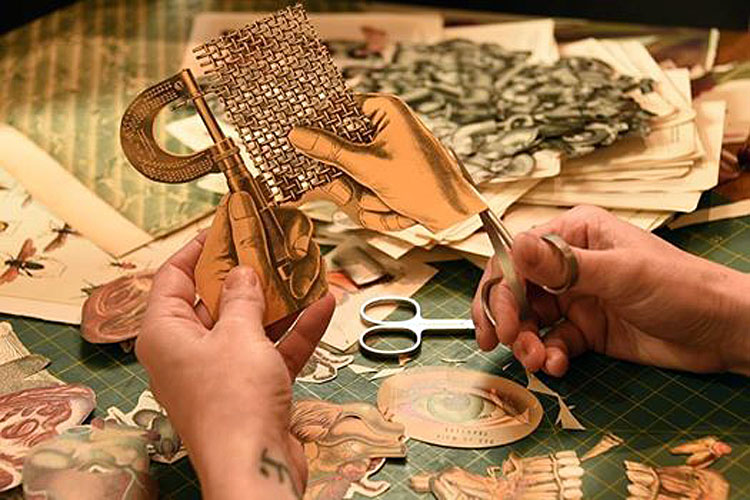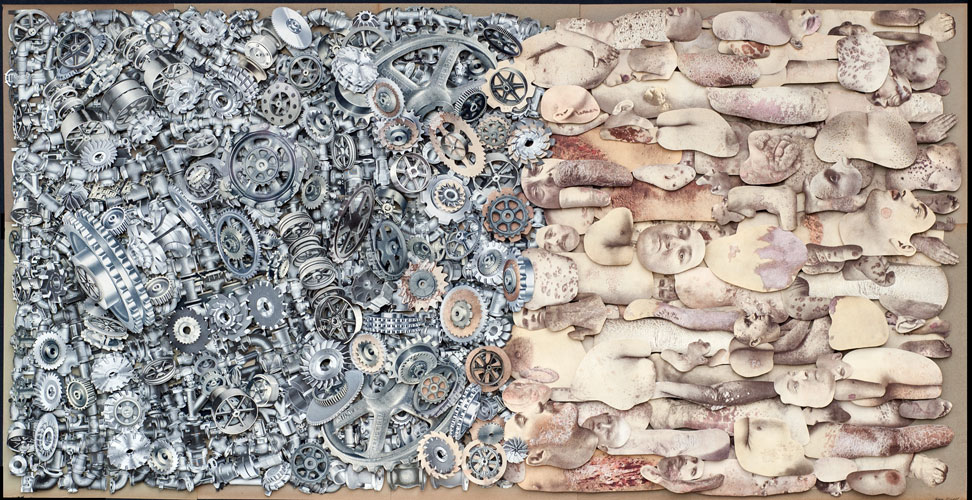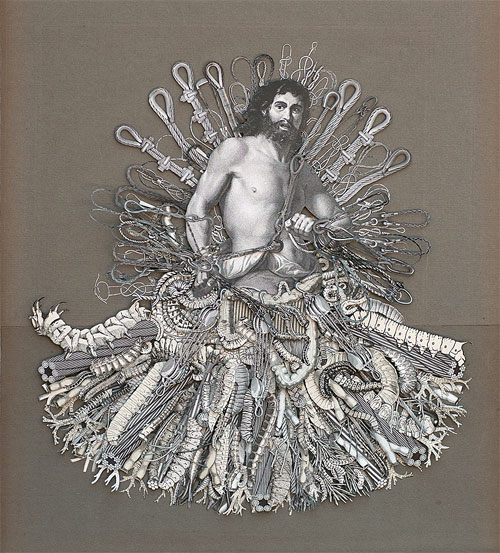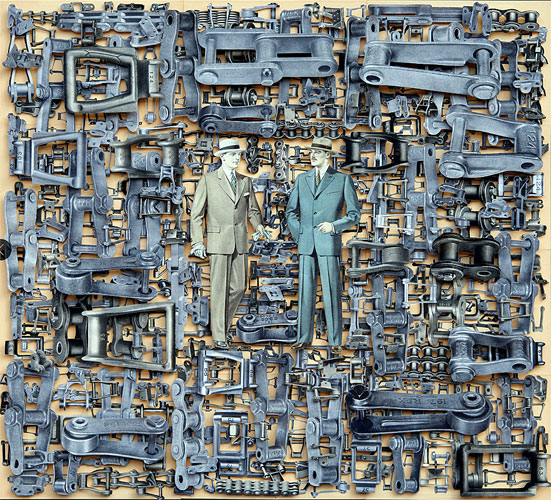Art, // December 2, 2018
Hope Kroll — ARTIST
Interview with artist Hope Kroll —
1. Who are you and what do you do?
I am a California-based artist specializing in hand-cut paper collage. I use cuticle scissors to dissect illustrations and diagrams from old medical texts, technical manuals, Audubon books, vintage photographs and encyclopedias to create elaborate and multi-layered three-dimensional collages.
2.Why art? What is your earliest memory of wanting to be an artist?
My interest in art began at a very young age. Having suffered from severe asthma since early childhood, I spent an inordinate amount of time either restricted to my home or confined to a hospital bed where I first began drawing to pass the time. I began my more formal artistic education at the age of seven when I was first enrolled in art school and continued my education in college, eventually earning my B.F.A. from University of Illinois, Champagne Urbana and my M.F.A. at the San Francisco Art Institute.
3. What are your favorite subject(s) and media(s)?
I find the beauty of old medical illustrations are quite captivating and am particularly fond of lavish color plates of skin diseases with their succulent pinks and oozing yellows. I find beauty in odd and disturbing imagery, especially medical anomalies which have always appealed to me. I bring that appreciation to my work, which can be unsettling for some people. I recently created a series of 12 collages combining skin diseases with bouquets of flowers. I find the challenge of transforming the grotesque into something beautiful to be especially satisfying. Besides medical imagery, other subjects that attract me are birds, botany, insects and animals. I am also captivated by machine parts such as chain links, gears, sprockets and pipes and I use these to create collage ‘machines’, some of which are very simple and others extremely large and complex.
4. How do you work and approach your subject?
I don’t tend to wait for inspiration but will keep on cutting even if I don’t have a specific idea in mind. I’m always stockpiling images for later use. Sometimes I might not even use a cut-out image until years later, which I prefer, since by then the image has lost some of its preciousness. The actual catalyst for starting a collage is simply the desire to use a certain image or series of images. The ideas flow from there. I generally like to have every image I think I might use in a particular collage already cut out before I begin. Then, to start a composition, I begin laying down images and move them around to get an idea of how they relate to one another. Now that I am working so much larger and with so much more imagery to deal with, I need to take photos of these initial compositions in progress in order to refer back to them later on. Assembling collages in three dimensions is an especially difficult and time- consuming process which requires me to be extremely careful of placement and composition.
5. What are your favorite art work(s), artist(s)?
Hieronymus Bosch, Frida Kahlo, Max Ernst, Ruth Martin, Laurie Lipton.
6. What are the best responses you
My favorite response to my work was from Cecil Touchon, Director of The International Museum of Collage, Assemblage and Construction and author of The Collage Art of Hope Kroll. In his book The Intricacies of the Heart and its Chambers, he had this to say:
“Many of Kroll’s works have intricately cut out illustrations all the way down to the individual hairs and blood vessels. The shear amount of time and attention Kroll spends in her elaborate assemblages is worthy of attention in and of itself”
He dubbed me a “paper surgeon”. This sentiment is one I hear often from people about my work and it always thrills me.
7. What do you like about your work?
I love the challenge of cutting out particularly difficult subjects such as insects with their delicate legs, veins, arteries and surgical tools. I enjoy working with my three-dimensional technique as it allows me to place significantly more visual information into a collage than would otherwise be possible. And I simply enjoy the act of cutting.
8. What advice would you give to other artists?
Keep surprising yourself and pushing yourself to create something that astonishes you.
9. Where do you see yourself in 5-10 years?
Working on increasingly larger and more complex three-dimensional collages and perhaps incorporating painting and drawing into my work. I also see myself do more sculptural pieces with paper on foam core or metal that doesn’t require framing.
LINKS —
Website: http://www.hopekroll.com
Instagram: https://www.instagram.com/hopetikvah/
Facebook: https://www.facebook.com/HopeKrollCollage/
Vimeo: https://vimeo.com/151205122












